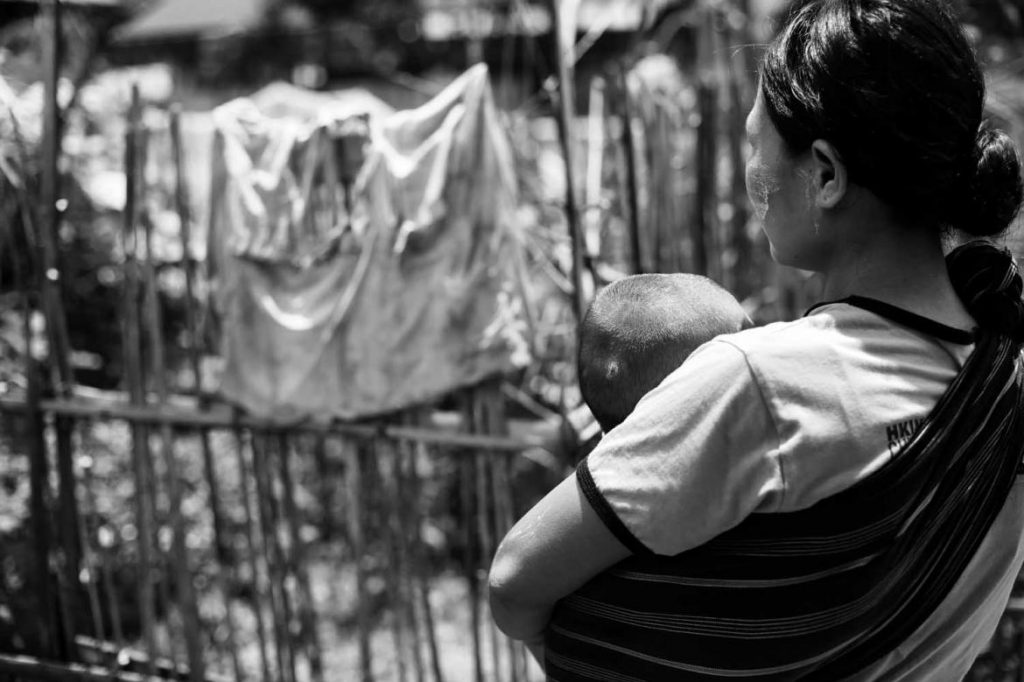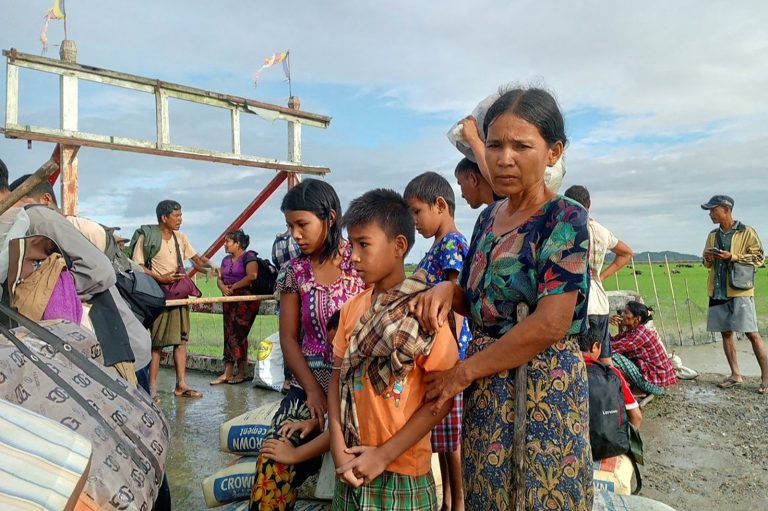Six years after a fresh outbreak of conflict, internally displaced persons there are more worried than ever over ongoing fighting in Kachin State.
By HKINJAWNG NAW & DUSTIN BARTER | FRONTIER
AS THE armed conflict in Kachin State approaches its sixth anniversary, the situation on the ground has deteriorated severely in the past few months. Armed clashes are rampant, thousands are being displaced or re-displaced, humanitarian access is extremely restricted – particularly in areas controlled by the Kachin Independence Organisation – and displaced people have minimal safe options for relocation.
People in Kachin State are living with an ever-increasing sense of anxiety and fear. The recent experience of a person fleeing from Awng Ra village, in Injayang Township, typifies the situation.
“In the early morning, around 7am on December 16, 2016, unexpectedly, the rest of the villagers and I heard and saw two fighter jets flying towards our village. Soon afterwards, we heard the noises of airstrikes near our village. The two Burmese military planes started shooting near the west part of our village around 7am and all the villagers ran into the forest,” the person said.
Another person who recently fled Zai Awng IDP Camp in Waingmaw Township, one of more than 6,000 IDPs recently re-displaced, shared their experience.
Support more independent journalism like this. Sign up to be a Frontier member.
“The intensive fighting broke out on December 28, 2016. Mortar shelling and gun shooting started from around 6pm to 1am. Even within the camp, fierce mortar shelling and gun shooting noises were heard for the whole night. Many mortar shells fell around Zai Awng IDP camp. On that very night, the whole camp had a shocked feeling, like the world was coming to an end.”
Despite long-term peace being a stated priority for the government, Tatmadaw and ethnic armed groups, hopes for such an outcome are being thrown into question.
The latest quarterly conflict monitoring report from Nyein Foundation featured interviews with around 100 people from eight Kachin townships to document their experiences and perceptions. Despite a small sample size, January’s survey shows a significant shift in sentiment across the state toward anxiety and despair.
Whereas 65 percent of October 2016 respondents felt unsafe to walk alone at night – a proxy for broader feelings of insecurity – this increased to 79.3 percent in January 2017. This result is likely linked to other responses in the survey, which indicate far greater prevalence of hearing gunshots or explosions (80.4 percent, a rise from 51 percent), and armed conflict near camps (48.9 percent, a rise from 36 percent).
As the conflict spreads, the relative sanctuary of camps is being lost. As one displaced person near Waingmaw town said: “We hear and see the fighter jets flying over us. We now think they might bomb us and just call it an accident.” This is very unlikely in such close proximity to Waingmaw and Myitkyina towns, but it demonstrates that fear is the new norm.
When respondents were asked whether they had faith that the current peace process could achieve lasting peace, the results are damning: 52 percent expressed at least some confidence in October, plummeting to only 20.6 percent in January. People who felt that “priority community issues are included in current peace processes” also dropped, from 53 percent in October to just 18.5 percent in January.
Interviews confirmed that displaced people are increasingly disenchanted with the current peace process. While the overtures of the 21st Century Panglong peace conference garnered national and international attention, it means little on the ground for IDPs when armed conflict and displacements become the norm. Trust in the peace process has turned to anxiety, as every new iteration seems to bring intensified armed conflict.
Longer-term barriers to peace and reconciliation are also emerging in terms of declining trust. Between October and January, people indicating some or complete trust in the Tatmadaw dropped from 15 percent to 9.8 percent; trust in the Myanmar government remained stable, rising from 28 percent to 29.4 percent; and trust in the KIO/A declined from 90 percent to 82.7 percent.
As trust declines and tensions rise, the path towards long-term peace becomes even more elusive, compounded by insecurity, fear and anxiety. It is clear that escalating fighting cannot be the pathway to peace.
At this critical juncture in Kachin State – and Myanmar – and with the second round of the 21st Century Panglong talks just around the corner, what can be done?
Kachin civil society, primarily the Joint Strategy Team have been speaking out, working behind the scenes and calling on armed groups, the Tatmadaw, the government and the international community to take action. But to what avail?
The silence is deafening, punctuated by airstrikes and heavy artillery. The temptation is to end this article with yet another call for an immediate cessation of hostilities, protection of civilians and guarantees of unfettered humanitarian access. All of these measures are urgently required, yet this has been known to all for a very long time.
National and international actors alike must now acknowledge that we cannot be content with the ways in which we operate currently, through representations and actions have failed to yield any progress while a violent and tragic conflict continues.
The critical question then arises: how are we going to do things differently?
This article is written as part of the Durable Peace Programme in Kachin, a consortium of KBC, KMSS, Metta, Nyein Foundation, Oxfam, SwissAid and Trócaire that is funded through a €7 million grant from the European Union. The views in this article are the sole responsibility of the authors and in no way represent those of the European Union.







